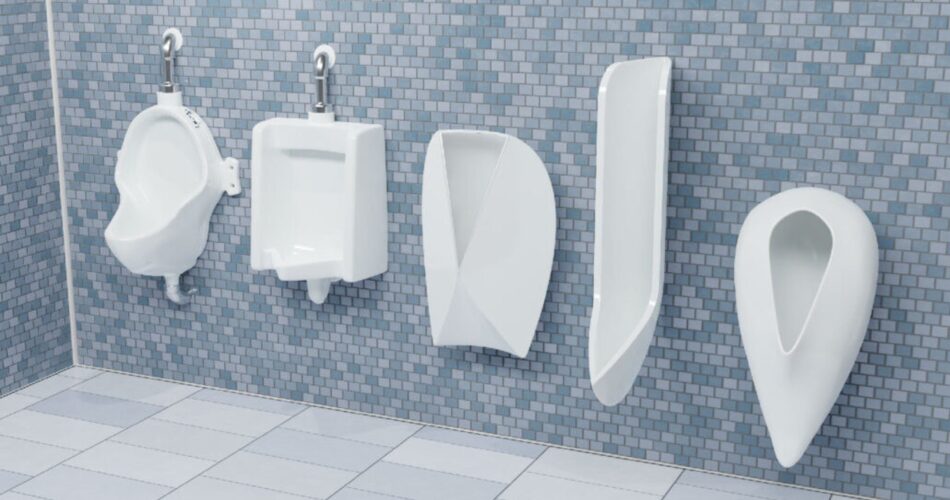Experts developed a new concept for urinals that don’t splash
On March 27, 1866, Andrew Rankin got a patent for the invention of the urinal. The style was extremely similar to the urinals we are familiar with now and hasn’t changed much over time. Anyway, although Rankin holds the title of the urinal’s official inventor, it is most likely that he based the urinal on similar devices that had been in use for a very long time before he applied for a patent.
Nonetheless, when it comes to urinals, a usual problem is the splash, for which they have never found a satisfying solution.
According to this article, in the fall of 2022, the team created a concept for a urinal that doesn’t splash at the American Physical Society’s Division of Fluid Dynamics meeting in Indianapolis. A nautilus shell’s geometry served as the model for the splashless urinal, which has a design that keeps drops from dripping out of the bowl.
The team made the exact kind of assumption about the need for an improved urinal as other people do. “We are physicists. We use urinals. We all got splashback on our tan pants sometimes and [on our] bare feet in summer, and were embarrassed”, said the University of Waterloo’s Dr. Zhao Pan, an assistant professor of mechanical and mechatronics engineering. He is also the director of the research facility where the “Nauti-loo”, a brand-new concept in urinals, was developed.
According to study assistant Kaveeshan Akan Thurairajah, droplets don’t get trapped in a standard urinal because current designs frequently consider splash prevention as an afterthought and are not optimized to avoid that.
Urinal design may appear straightforward, but there is actually a lot of physics at play. Whether splashing occurs depends on the slope and angle of the porcelain, as well as the user’s height and the stream’s force. The University of Waterloo team saw significant splashing while simulating the use of a typical urinal using colored water and a simulated ureter. The restroom floor, as well as the legs and feet, are covered with those drops.
“Most of us do realize that droplets are being spread, but probably don’t realize how bad it is”, says Thurairajah. “This is partly due to the fact that sticky floors are the result of multiple trips, and also the biases in our head; clearly the mess is others’ and not mine”.
In fact, a typical bathroom is completely covered in droplets unless it has recently had a thorough cleaning.
According to Thurairajah, the scientists concentrated on one splash aspect known as the “impinging angle”, (the angle at which the stream and the porcelain meet) to find a solution. They discovered that there was no splash below 30 degrees. Therefore, he adds, “Thus, we called this a ‘critical’ angle”, “We wanted a curve that always intersects the trajectory at this angle. This is the same curve as a nautilus shell”.

The mollusk known as the nautilus, which is related to the squid and octopus, moves by expelling water from its shell. The Fibonacci sequence, which was first established in the Middle Ages as part of the foundation of natural geometry, is visually represented by the spiral shape of the shell, which is thought to be mathematically “perfect”.
Since the time of the ancient Greeks, who saw the nautilus shell’s symmetrical shell as a symbol of perfection, it has served as a symbol of mathematics and science. In his book Twenty Thousand Leagues Under the Sea, Jules Verne gave Captain Nemo’s submarine this name, and it is also the name of a well-known science magazine.
“The next steps are securing intellectual property protection and then manufacturing”, says Thurairajah. Switching to the Nauti-loo, the scientists hope, will make bathrooms a more sanitary place, and help “save water, chemicals and the effort required to clean”.

